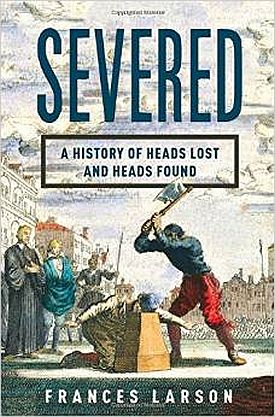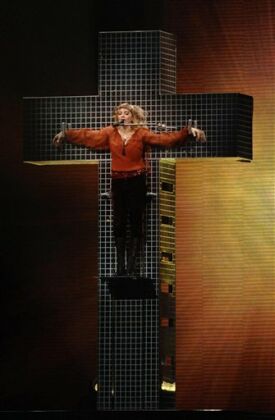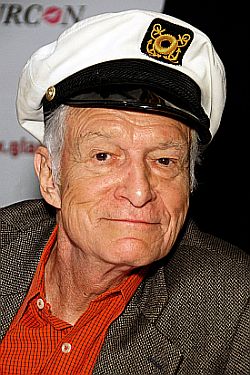Heads Over Heels
From The Weekly StandardFrances Larson
Severed: A History of Heads Lost and Heads Found
Author:Frances Larson
Hardcover:336 pages
Publisher:Liveright
To judge by what is fittingly called the “head shot” of Frances Larson on the jacket of her book, she is a young and pretty woman with a remarkably long neck. If one were a headsman — that is, if headsmen were still plying their ancient trade, outside the desert wastes of Iraq and Syria and Saudi Arabia — one might well be licking one’s lips while thumbing the blade of one’s axe.
All the more so, perhaps, as Severed must be the definitive work on the detachment of heads from bodies in the pre-ISIS era (jihadist beheadings are only cursorily treated). But if Larson’s head, so precariously seated, is filled with horrified thoughts on the subject, you wouldn’t know it from the dull tone of clinical detachment she employs, or the muddy half-tone illustrations that save this volume from accusations of tastelessness — and the publishers from unnecessary expense.
In the days when public executions were a form of entertainment, beheadings were a rare treat outside of post-Revolutionary France, reserved for the most aristocratic of criminals. Common folk had to make do with hanging, which took longer and presumably involved more death-agony for the victim, though that was sometimes disputed. After the advent of the guillotine, science — or what went under that name — devoted some of its investigatory zeal to an unsuccessful attempt to determine how long the victim retained consciousness after the presumptively fatal blade had fallen.
 |
Frances Larson generally disapproves of such 19th-century scientific curiosity, which also manifested itself in such pseudo-sciences as craniometry and phrenology, and of harvesting in its name, as European imperialists once did, vast numbers of skulls from their subject races. Her own curiosity is thus made safe by a cordon sanitaire of academic jargon about imperial “objectification” of such people. The reader in search of titillation must also sit through a certain amount of psychologizing about the dehumanizing processes that typically take place in war. Who knew?
There is no indication whether or not a World War II sailor named Thomas J. “Horrible Swede” Larson was any relation of the author, but he seems to have had an unusual degree of self- awareness about his principal avocation when he wrote that “a guy is pretty far gone when he begins to collect enemy skulls.” In some ways, the most memorable of the book’s illustrations is a photograph from Life (1944) of a girl with a smile and ribbon in her hair pensively regarding a “Jap” skull sent home to her as a souvenir from New Guinea by her naval boyfriend.
Yet it is interesting, really, because of its rarity. Along with the contemporaneous presentation by a congressman to President Roosevelt of a letter opener fashioned from a Japanese arm bone, it created such a public outcry that there was an official crackdown on souvenir-taking — and photographing. Like the disciplining of General Patton for slapping a shell-shock victim, this seems to foreshadow our more tender-minded attitude of today, which, along with a stern disapproval of the more unabashed curiosity of our ancestors, is everywhere present in this volume.
To that attitude, and “curiosities” like the detached heads of foreigners, we owe the foundation of many of the modern, but now more tasteful, museums in which we are fortunate enough to while away so many happy hours. Larson suggests that we had better enjoy them while we can, however, since the recent return of Maori skulls harvested in New Zealand for the edification of Europeans and Americans is said to have led to the re-sacralization of museums or parts of museums in that country, making them into places not for “curiosities” but for the descendants of the deceased and dismembered to venerate their restored bones.
“The very definition of a museum is shifting as people are given the space to honor their dead,” Larson writes. And that, I suppose, is a development to be welcomed, although I would have found a history of that evolution of public sensitivity more interesting than the dreary catalogue of Stakhanovite skull-collecting by 19th-century empire-builders that Severed at times threatens to become.
Not that a compensating dullness for its potentially over-exciting subject matter prevents the book from offering many fascinating facts to the merely curious. One thing I learned is that, in the head-happy 19th century, Haydn, Mozart, Beethoven, Schubert, and heaven knows how many other great men of the period (and before) were posthumously beheaded in order to supply a private and illegal demand for the skulls of geniuses. The motivation for head-collecting alone makes for a fascinating bit of social history, especially when contrasted with the eventful history of the posthumously decapitated, but possibly supposititious, head of Oliver Cromwell, pictured as it is here being held up, seemingly on a stick, in 1949 by Canon Horace Wilkinson. (His family owned the head for a century-and-a-half before it was finally buried in the chapel at Sidney Sussex College, Cambridge, in 1960.)
We also learn, though hardly for the first time, that much of the suspicion with which science was regarded before the last century was due to early scientists’ ghoulish interest in salvaged bits of dead people, which they acquired by employing the services of “resurrection men” who made a living out of plundering graveyards. Larson omits, however, any account of the two Irishmen, William Burke and William Hare, who, in Edinburgh in 1828, did much to inflame public hysteria against would-be students of anatomy by killing 16 of their specimens before they could reach the cemetery.
Today, there is apparently no shortage of public-spirited types willing to donate their bodies to science, and the mixture of affection and reverence felt by student physicians for the cadavers provided for their education makes for one of Larson’s most interesting, if least sensational, passages. It suggests that she could have done without the attention given to a publicity-seeker like Damien Hirst, pictured at age 16 grinning next to the head of a dead man in a morgue in Leeds. Oddly, there is no mention of that artist’s For the Love of God (2007), consisting of a human skull to which are glued 8,601 polished diamonds. It is not the skull, apparently a relic of the head-hunting days of 200 years ago and picked up in a shop in Islington, but the diamonds that are said to have been “ethically sourced.”
The contemporary equivalent of the head-crazies of the 19th century is those who seek a different, if even more elusive, sort of immortality — those who have their heads frozen in the hope of being thawed out and attached to more serviceable bodies, either mechanical or organic, at such time as medical science shall have advanced to the point of being able to do such an appalling thing. I would have liked a bit more about this, but Larson does point out some of the ways in which the owners of these disembodied heads might not quite have thought through their plans for self-resurrection. If Severed could have used more of this and other matters that its author must have seen as yielding too much to the morbid curiosity of the first head-collectors, at least it shows that she’s got a good head on her shoulders.
Discover more from James Bowman
Subscribe to get the latest posts to your email.







